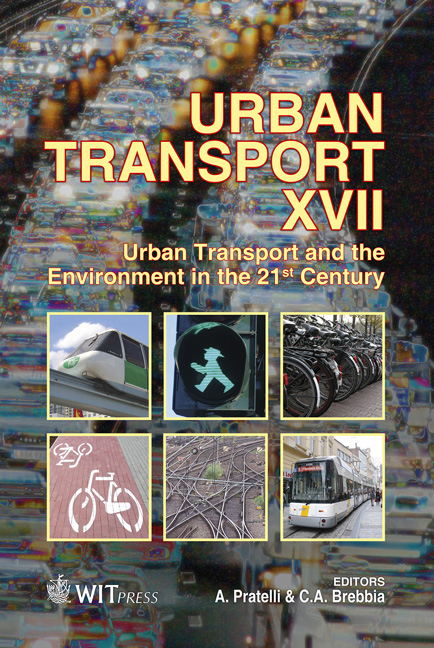Short-term Forecasting In Road Evacuation: Calibration Of A Travel Time Function
Price
Free (open access)
Transaction
Volume
116
Pages
12
Page Range
615 - 626
Published
2011
Size
3,043 kb
Paper DOI
10.2495/UT110521
Copyright
WIT Press
Author(s)
G. Musolino & A. Vitetta
Abstract
The paper presents a framework to define a function for estimating within-day variations of travel time on a network. The framework integrates two main components: a within-day traffic assignment model, that simulates the interaction between travel demand flows and the road transport network, and a dynamic vehicle routing model that provides optimal routes of emergency vehicles. The variable linking the two models is the short-term forecasted travel time, making it possible to capture anticipatory information on traffic dynamics on the network in evacuation conditions. Keywords: within-day traffic assignment, dynamic vehicle routing, short-term forecasting. 1 Introduction Correct information about travel time on a transport network is important to plan optimal Vehicle Routing (VR). In congested urban networks this is a binding task both in ordinary conditions for freight vehicles in order to perform efficient delivery and pick-up operations (e.g. to adhere to strict time windows) and in evacuation conditions (e.g. when a population has to be evacuated due to an approaching calamitous event) for emergency vehicles in order to allow people and goods to be rescued. In the former case the goal is to reduce costs of freight transport, while in the latter case it is to mitigate risk for people and goods. ITS technology enables real-time information on travel times to be provided on some network elements (links, paths, …). However, it is necessary both to cover the non-monitored elements of the network and to have reliable forecasted travel
Keywords
within-day traffic assignment, dynamic vehicle routing, short-term forecasting





